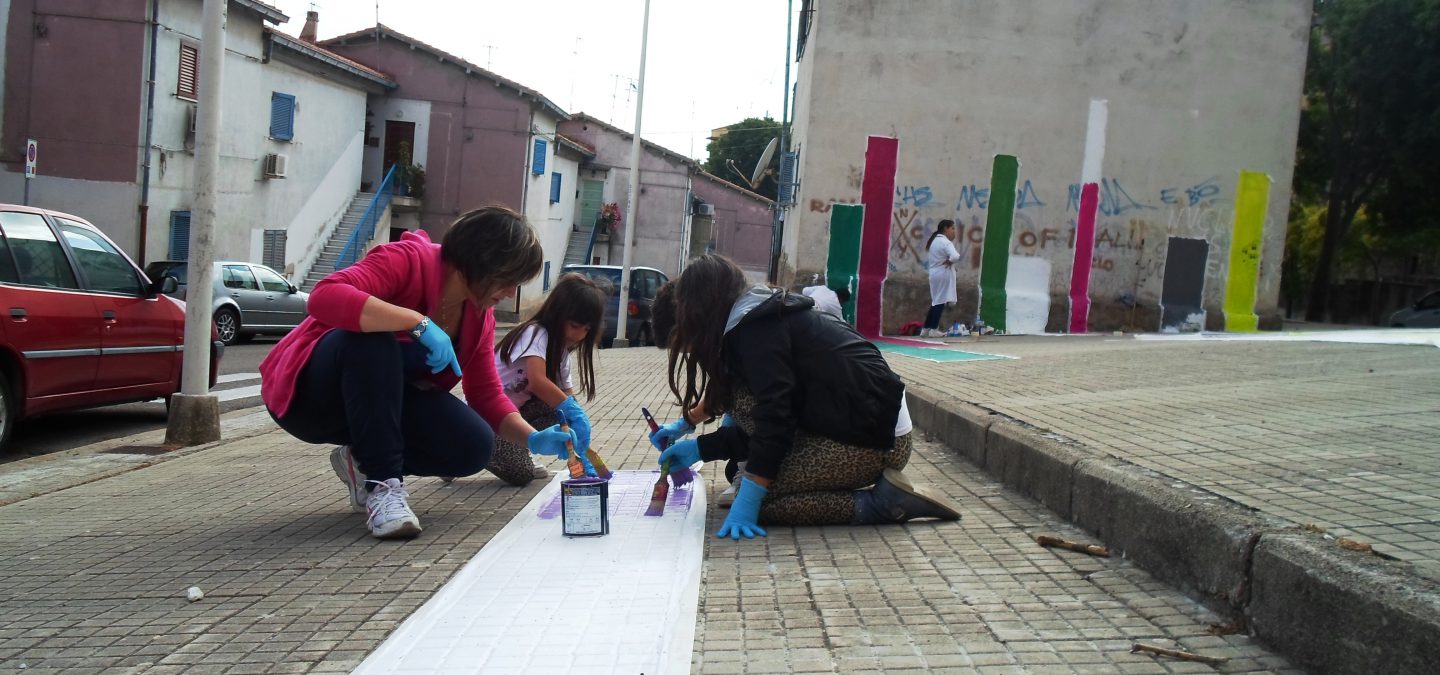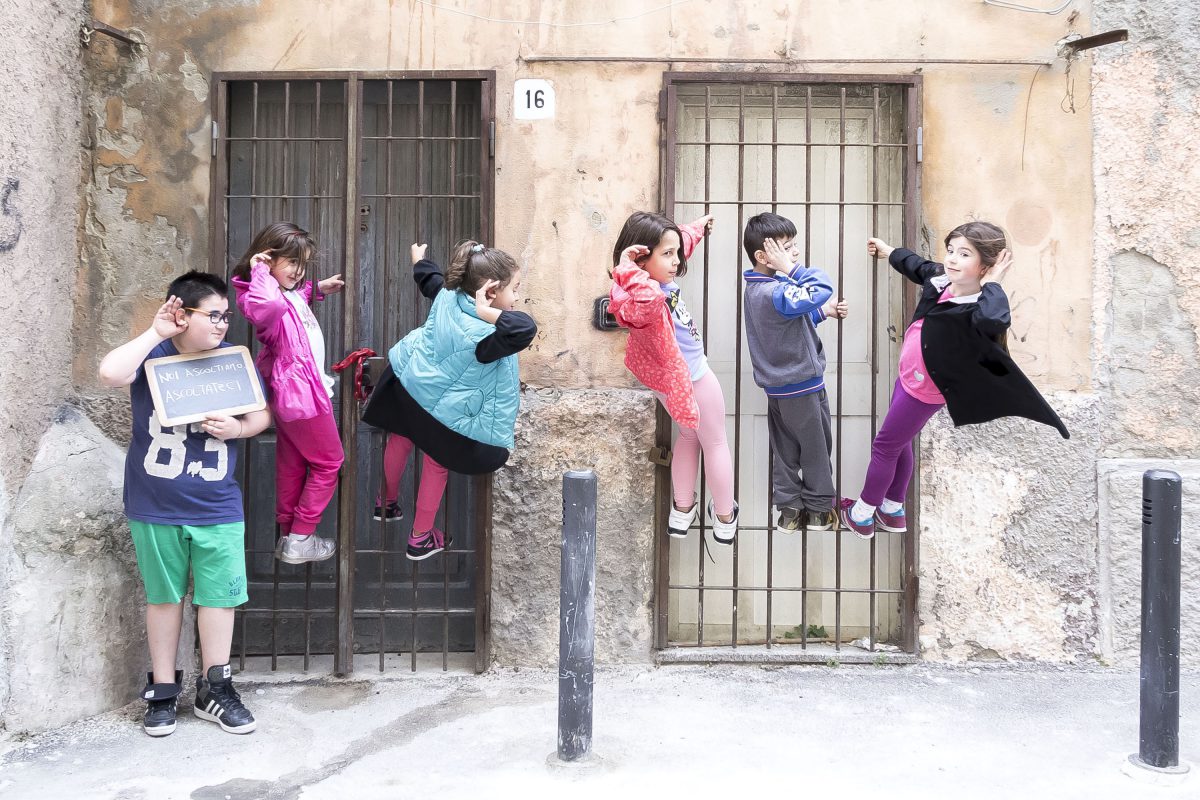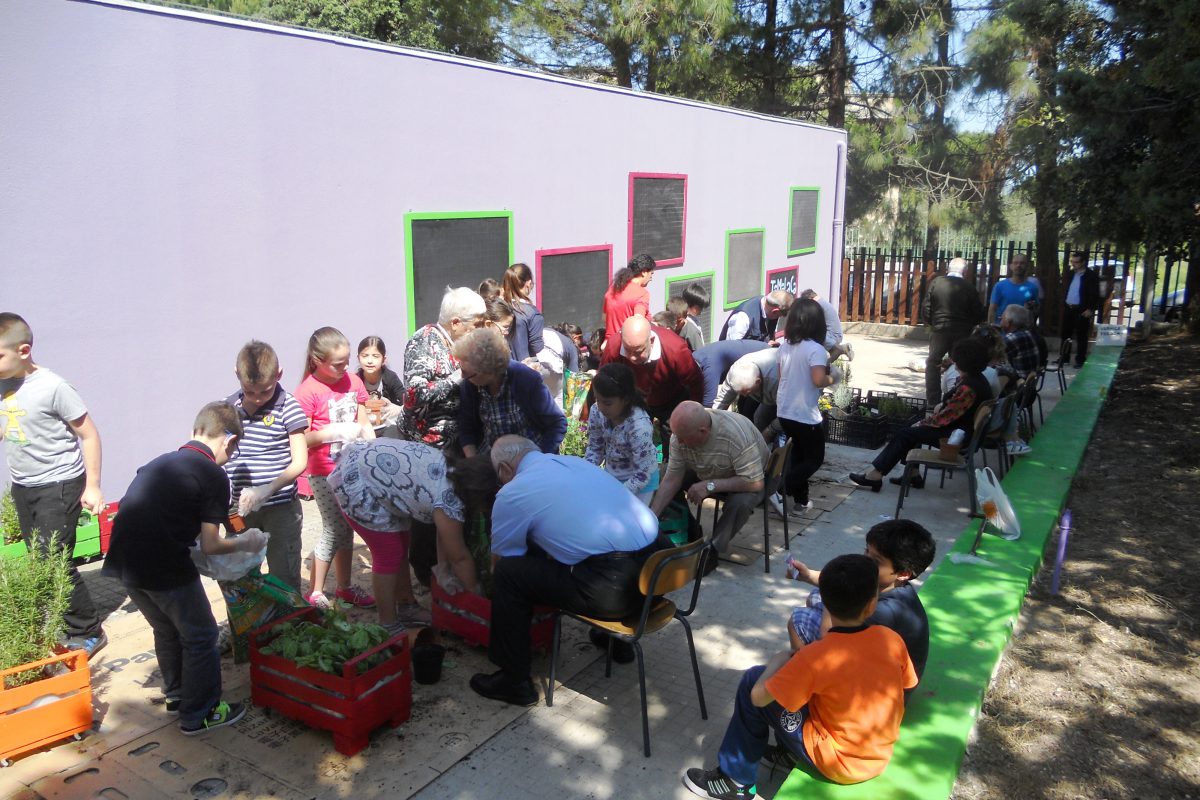
Keep up with our latest news and projects!

In the extraordinary book “The child in the city”, published by The Architectural Press in 1978, Colin Ward defines the city as an «attenuated environment». It is a definition more meaningful than ever: the contemporary city is a diminished environment, accessible and usable almost exclusively through controlled and predefined ways and times. This hardly allows inhabitants to act as agents of change, that is to “interfere” with the established organisation of spaces and times of their city and thus to drive unexpected transformations.
City spaces are more and more specialised, separated – marked off by physical elements, such as fences that surround parks and public gardens or schools – and usually dedicated to a single category of users.
The fact that the city is organised with a division into compartments dedicated to different functions (and therefore for different users) is clearly visible at the urban scale, but it also tends to recur even at the neighbourhood scale. This particularly affects the most disadvantaged groups – children, women, elderly, and people with different disabilities – who should instead find real opportunities to improve their quality of urban life in their everyday city.
Among them, children – “imprisoned” in dedicated, hyper-designed, and hyper-equipped spaces with the implicit intent of monitoring and homologating their activities – are the group that suffers the most, and with most serious limitations in terms of actual opportunities of using nearby public spaces and streets of their neighbourhood.
In view of this, it is essential to ask what can be done in order to promote the quality of urban life for children. In other words, what needs to be done to ensure that the city works for children (and not only for them) as an “educational environment”, as suggested by Colin Ward. That is, as an opportunity by which they can learn, not only how to use public spaces and streets, but above all how to contribute to changing them.
Tactical Urbanism (Lydon & Garcia, 2015) can be considered as a real and practical answer to this challenging question1.
 Micro Bodies in Micro Urban Space: We are listening
Micro Bodies in Micro Urban Space: We are listening
Urbanism becomes tactical when aside from “planning” through large- scale and long-term urban policies, plans and projects, it is able to guarantee and promote the actual possibility for all to “remake” the city by way of micro-transforming, co-managing, and taking care of public spaces and streets of their neighborhoods. And, at the same time, to interfere with the sanctioned system of planning and government of the city (whether in a collaborative or antagonistic manner depends on the case and the context).
 Il Giardino che Non C’è(ra): children & elderly
Il Giardino che Non C’è(ra): children & elderly
Urbanism becomes tactical when aside from “planning” through large- scale and long-term urban policies, plans and projects, it is able to guarantee and promote the actual possibility for all to “remake” the city by way of micro-transforming, co-managing, and taking care of public spaces and streets of their neighborhoods. And, at the same time, to interfere with the sanctioned system of planning and government of the city (whether in a collaborative or antagonistic manner depends on the case and the context).
The research-action of Tamalacà – an all-female team of urban planners, spin-off of the Department of Architecture, Design, and Planning of the University of Sassari (Sardinia, Italy) – is based on these considerations. In fact, the aim of extra-small actions and projects led by Tamalacà is to improve the quality and the “playability” of the forgotten public spaces and the walkability of the streets of the most disadvantaged neighbourhoods, through the real involvement of the primary schools (children, teachers, parents, and so on) in the design and realisation of tactical actions and transformations, conceived as a means to support children in constructively reclaiming their denied urban rights. Although different, all these actions and transformations have in common two main distinctive features.
The first one is recognising the value of the relation between conflict, participation and empowerment processes. Participatory design is commonly considered as a tool aimed at facilitating the resolution of explicit or latent conflict. The result is an interpretation of the conflict exclusively as a problem and not as a “resource” of participation.
Tactical Urbanism, on the contrary, makes use of conflict as a resource and even a result of bottom-up tactical processes. This allows children involved in tactical actions to act not only to see recognised here and now urban rights that are denied, but also to contribute to a long-term process aimed at achieving an ever-widening spread of spatial justice. In doing so, children could learn how to promote themselves as citizens capable of driving the change, in case – when it is needed and useful – also through constructive conflictual actions.
The second one, is the focus on the transformation of residual spaces in everyday public spaces through DIY urban design, with the intent
of providing the most disadvantaged neighbourhoods with places accessible and usable by everyone. The DIY urban design serves two purposes: on one hand, it allows children to “participate by doing”, feeling really involved in the process, and on the other hand allows urban planners and designers to “design by doing”, adjusting the project according to the actual needs and desires of children, without sacrificing the formal quality.
Tactical Urbanism can be considered, therefore, a tool and a process that children can effectively use as a practice to take the city back, to image and realise the possible transformations, and to be able to claim it.
Among all the projects led by Tamalacà, the playful urban performance Micro Bodies in Micro Urban Spaces (inspired by Bodies in Urban Spaces of Willi Dorner) is particularly interesting, since it relates very tightly to the City at Eye Level for Kids approach.
The main goal of Micro Bodies in Micro Urban Spaces was to denounce the growing “hostility” of the city towards all those people whose bodies don’t match the body of the ideal citizen type – adult, male, healthy, wealthy, educated, and car-owner – on the basis on which the cities and their public spaces and streets are designed, organised, and regulated.
Working from this assumption, children of the primary school of San Donato (a disadvantaged neighbourhood of the old city of Sassari) have been engaged in the co-creation of performance in and with the urban space.
By “cramming” their bodies into some denied spaces, children were able to express dissent towards the lack of playfulness in public places in a very effective manner.
The urban performance contributed to bring public awareness about the problem of the lack of spaces for children to play and led the way to the realisation of the Parklet of San Donato: the “liberation” and micro-transformation of a small part of the square in front of the primary school, occupied by parked cars, in a extra-small playable public space.
Notes:
1 We can define as “tactics” all the low-cost and low-tech actions and transformations, originated from bottom-up processes, which can be quickly and easily replicated and scaled up, and are intentionally designed and developed to instigate a long-term change.
This article belongs to a series of stories about the city at eye level for kids! You can access the full book online in PDF or pre-order your hardcopy to be delivered to your home.
Get your book here